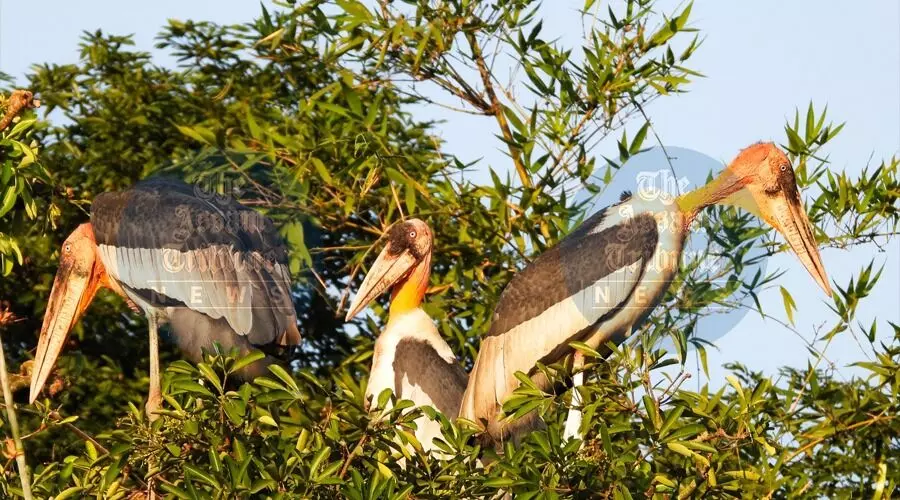
AT Photo: Hargila at Kulhati
Kulhati (Kamrup), Nov 28: In a remarkable development that highlights the power of community conservation and the resilience of species once they get some breathing space, a new colony of the rare greater adjutant stork (locally known as Hargila) with 52 nests has been identified at Kulhati near Hajo in Kamrup district.
The development is significant because this marks a strong comeback by the giant bird which was given a fresh lease of life around one and a half decades back by a community conservation initiative in the Dadara-Pachariya area. While the community campaign led by acclaimed biologist Dr Purnima Devi Barman had ensured that the rapidly dwindling bird population rose from the brink, their new-found home at Kulhati is a clear indication that their growing numbers have made them seek out new pastures to breed and expand.
The new nesting colony was identified during a nest survey of the bird conducted by a team of young conservationists comprising Karishma Das, Barasha Rani Das, Manab Das, Gautam Das, Dipankar Das and Nayan Das led by Dr Barman.
“After we had received a call from a villager about a nest sighting, our team surveyed for several days till November 22. We identified the trees as nesting sites for the storks, marking the establishment of a new breeding colony,” Barasha said.
Terming it a significant development for the long-term conservation of the bird, Green Oscar winner Dr Barman said that it rekindled hope for a secure future for the species. “Witnessing these majestic birds expand to new nesting areas has always been our dream. This discovery offers immense hope amidst the growing challenges of habitat destruction.”
Another critical aspect of the turnaround concerns community support for Hargila conservation as has been witnessed in the Dadara, Pachariya and Singimari villages that already host the world's largest breeding population of the bird.
Enthused by the presence of the birds, the residents have come forward to shoulder the responsibility of providing the birds with a disturbance-free environment.
“We are protecting their nesting trees and we do not mind the litter they generate on the ground. We clean up their mess as would have done to that done by our children," Khirada Das, a tree-owner, said.
Awareness campaigns have already begun in Kulhati, with posters distributed and community meetings organized to educate villagers about the differences between the greater adjutant and other stork species, such as the lesser Adjutant or the open-bill stork.
“The survival of the Hargila depends on collective action. We urge the Assam Government to prioritize the protection of nesting trees, safeguard wetlands, and provide SOS support for rescuing fallen chicks during the breeding season. A rehabilitation facility at the local Forest Department in every district is very helpful for the bird and for encouraging local people's support,” Dr Barman stressed.
